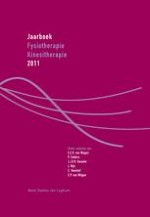Samenvatting
Trainingsinterventies vormen een hoeksteen in de multidisciplinaire tweedelijnsbehandeling na een acuut myocardinfarct (AMI). Dergelijke interventies leiden tot een toename van de maximale zuurstofopnamecapaciteit (VO2max), een parameter ter bepaling van de fysieke fitheid. Studies laten een relatie zien tussen een toename van de VO2max ten gevolge van trainingsinterventie en een daling van de kans op vroegtijdig overlijden. Bovendien is de verandering van de VO2max niet onderhevig aan vele medicijnen die deze patiënten nemen (in tegenstelling tot bloedcholesterol, glykemische controle en/of bloeddruk), waardoor deze een goed beeld verschaft van de klinische efficiëntie van de trainingsinterventies. Het is dus binnen multidisciplinaire programma’s van groot belang trainingsinterventies te implementeren die effectief en snel de VO2max doen stijgen. In dit hoofdstuk wordt dieper ingegaan op de effecten van trainingsmodaliteiten op de VO2max van patiënten na een AMI. Een hogere trainingsfrequentie (tot twee dagen per week) en een langere programmaduur (tot 38 weken) geven aanleiding tot een grotere toename van de VO2max. Een trainingsfrequentie meer dan twee dagen per week en/of trainingsinterventies van meer dan 38 weken blijkt echter geen verdere toename van de VO2max te geven. De effecten van continue hoogintensieve training (in vergelijking met continue laagintensieve training), hoogintensieve intervaltraining en/of toevoeging van krachttraining op de VO2max blijken tegenstrijdig te zijn in de huidige literatuur. Verder onderzoek is vereist om de effecten van deze trainingsmodaliteiten of -methodieken te beschrijven.
